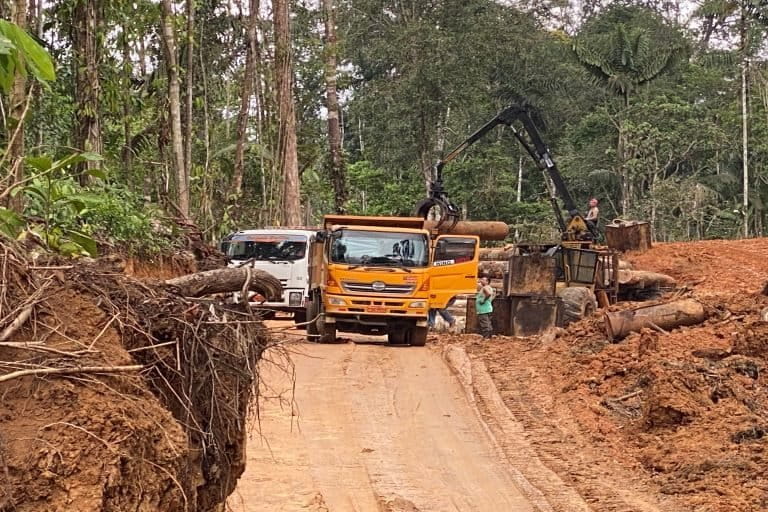- Some of Home Depot’s plywood is allegedly sourced from vulnerable forests in Ecuador’s Chocó region and the Brazilian Cerrado, and conservationists and investors have pressured the home improvement giant to clean up its supply chain.
- At the company’s annual shareholders’ meeting last week, a proposal passed requiring Home Depot to reevaluate policies related to sustainability certifications of wood suppliers.
- Although the proposal doesn’t technically force the company to change its policies, conservationists are confident it will lead to tangible action.
Pressure from investors and conservationists has forced Home Depot to reevaluate how it does business, following findings that some of the plywood it sells may be coming from mega diverse forests affected by deforestation.
Shareholders voted May 19 on a proposal that requires the company to study the certification standards of its wood suppliers, which could help limit deforestation in vulnerable forest ecosystems across the planet.
“It’s a good day for the world’s forests, from Canada’s boreal to the tropical rainforests of South America, and for the species that depend on them,” Green Century President Leslie Samuelrich said in a statement.
Green Century Funds, an environmentally focused investment fund that owns some 42,000 shares of Home Depot stock, had submitted the proposal to ask the company to review if and how it could increase the “scale, pace and rigor of its efforts to eliminate deforestation and the degradation of primary forests in its supply chains.”
Home Depot has around 2,300 locations across North America, making it the region’s largest home improvement retailer and a significant wood importer. The company doesn’t offer specific figures on how much it imports from where.

The company hasn’t committed to rigorously evaluating those imports, Green Funds pointed out, and only requires that some products in some parts of the world receive deforestation-risk certification from third-party evaluators. In addition to Ecuador’s Chocó, Brazil’s Atlantic Forest and Cerrado and Paraguay’s Gran Chaco aren’t listed on the company’s “endangered regions” list, according to the fund.
Ahead of the annual meeting, the company’s board recommended that shareholders vote against the fund’s proposal, saying that the creation of a report investigating wood sourcing wouldn’t boost forest protection, but only “create an additional administrative burden.”
“We believe that our Wood Purchasing Policy and our current disclosures appropriately detail our efforts to monitor and manage our impacts on our forests,” Home Depot’s board said, “and our efforts and goals will continue to help us address deforestation-related risks in our supply chain.”

But then, in a rare move, shareholders went against the board’s recommendations, voting by around 65% to approve Green Century Funds’ proposal.
Although it only requires Home Depot to put together a report evaluating its current standards for wood sourcing — and not necessarily to change its business practices — it should ultimately result in tangible improvements, a spokesman for the fund told Mongabay.
“We are pleased that a majority of Home Depot’s shareholders have called on the company to accelerate action to end deforestation and the clear-cutting of old growth trees in its supply chains,” Samuelrich said in her statement.
Earlier this year, Home Depot competitor Lowe’s agreed to put together similar reports showing how it is accelerating efforts to eliminate deforestation and the degradation of primary forests in its supply chains, also following pressure from Green Century Funds.
Home Depot didn’t respond to a request for comment for this article.
Environmental campaigns against Home Depot
Pressure on Home Depot to change its wood-sourcing policies increased ahead of the annual shareholders’ meeting, thanks in part to a campaign to save the Chocó region of western Ecuador, where the company allegedly sources from old-growth forests.
The area has lost more than 1.8 million hectares (4.4 million acres) of forest in the past 20 years, much of it from logging by international wood suppliers.
“I don’t understand why Home Depot would continue to do this knowing what they know,” Brian Rodgers, an environmental activist and board member of the conservation NGO Saving Nature, told Mongabay ahead of the shareholders’ meeting. “They’re turning a blind eye to it.”
Rodgers has spent the last four years building a campaign against logging in the Chocó, which culminated in a mobile billboard truck circling Home Depot’s Atlanta headquarters, as well as a full-page ad that ran in the Atlanta Journal-Constitution before the shareholders’ meeting.
He also produced a short documentary called Home Depot Destroying the Rainforest for Plywood, detailing how wood makes it from the Chocó to Home Depot’s shelves.

The footage, shot earlier this year, shows wood supplier Endesa-Botrosa cutting down and transporting trees that, in some cases, took hundreds of years to grow, and can’t be easily replaced through reforestation efforts.
Endesa-Botrosa appears to be supplying Home Depot with wood for its Sandeply brand of plywood, which is made from the Brosimum utile tree, also known as sande. Cutting down these trees also impacts other flora and fauna in the area, such as the critically endangered brown-headed spider monkey (Ateles fusciceps fusciceps), the spectacled bear (Tremarctos ornatus) and the jaguar (Panthera onca).
The documentary shows Endesa-Botrosa as linked to violence against environmental defenders and to the deforestation of vulnerable rainforests without a sustainable management plan.
A spokesperson for Endesa-Botrosa said the video in the documentary is old and taken out of context. He also reiterated the company’s dedication to sustainable logging. “All, absolutely all, of the forest operations have a sustainability plan,” he said.
Banner image: Trees recently cut down by loggers lie in the road in the Chocó. (Photo courtesy of Brian Rodgers)
FEEDBACK: Use this form to send a message to the author of this post. If you want to post a public comment, you can do that at the bottom of the page.
